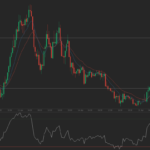West Texas Intermediate crude rose on Friday, having touched a five-week high on Thursday, and headed for its best weekly performance since early July after larger-than-expected US GDP growth improved oils demand prospects in the worlds top consumer. Prices continued to draw support after the EIA reported on Wednesday that US crude inventories fell last week, snapping 10 consecutive weekly builds and as TransCanada Corp. said yesterday its 700 000-bpd pipeline from Cushing, Oklahoma to Port Arthur, Texas, will be brought online by mid-January. Evacuations from North Sea platforms due to what might be the worst storm to hit the continent in years also aided the oil market.
On the New York Mercantile Exchange, WTI crude for delivery in January fell by 0.11% to $97.28 per barrel by 8:27 GMT. Prices shifted in a narrow range between days high and low of $97.51 and $97.22 respectively. The US benchmark rose to a five-week high of $97.99 on Thursday and settled the day 0.4% higher, but trimmed its weekly advance to little over 4.8% on Friday.
Meanwhile on the ICE, Brent futures for settlement in the same month traded at $111.18 a barrel at 8:26 GMT, up 0.18% on the day. Prices ranged between $111.40 and $110.95 a barrel. The European benchmark lost 0.5% on Thursday but extended its weekly gain to near 1% on Friday.
The oil market drew support after much-better-than-expected economic data from the US boosted demand prospects in the worlds No1 consumer. The US Commerce Department reported the nations preliminary Gross Domestic Product grew at a 3.6% annualized rate in the third quarter, up from the initial estimate of 2.8% and the strongest since Q1 of 2012, beating analysts projections for a 3.1% expansion. According to the report, US growth was mainly driven by the largest increase in inventories since early 1998. Inventories increased at a $116.5 billion annualized pace in Q3, compared to $86 billion rate the preceding quarter.
A separate report provided by the Labor Department showed that the number of people who filed for initial unemployment benefits sharply dropped in the week ended November 30. Initial Jobless Claims declined to 298 000 last week, compared to an upward revised 321 000 claims in the preceding week, confounding analysts expectations for a jump to 325 000.
Yesterdays jobless claims, coupled with better-than-expected employment data on Wednesday, fueled speculations we might get upbeat readings on Friday when the Labor Department will release Novembers keenly awaited non-farm payrolls and unemployment rate. Automatic Data Processing Inc. reported on Wednesday that U.S. private employers added 215 000 jobs last month, the biggest increase in a year, confounding analysts projections for a decline to 170 000. October’s reading received an upward revision to 184 000 from initially estimated at 130 000, suggesting the US economy fared better than economists thought in October.
Todays reports may show that US employers added 180 000 workers to non-farm payrolls in November, while the unemployment rate slid back to a five-year low of 7.2%. If confirmed, this would further boost demand prospects, but gains are expected to remain limited as the readings would also reinforce speculations for an earlier-than-expected tapering of Feds monetary stimulus.
Tony Nunan, oil risk manager at Mitsubishi Corp in Tokyo, commented for CNBC: “GDP numbers were strong, so that makes us more comfortable about a recovery in the U.S. economy. But once tapering starts, thats probably time for people to take profits and get out of risk assets, including oil.”
Inventories data
Oil prices continued to draw support after the Energy Information Administration said earlier in the week that US crude supplies declined for the first time in 11 weeks in the seven days to November 29. Stockpiles fell by 5.6 million barrels in the seven days through November 29 to 385.8 million, exceeding more than ten times the median estimate of analysts surveyed by Bloomberg.
Supplies at Cushing, Oklahoma, the biggest US storage hub and delivery point for NYMEX-traded contracts, fell by 18 000 barrels to 40.6 million, the first drop in eight weeks.
The report also showed that refinery utilization picked up in the seven days to November 29, suggesting supplies will most likely decline further in the upcoming weeks. Refineries operated at 92.4% of their operable capacity, up from 89.4% a week earlier, and exceeded analysts’ expectations. Gasoline production fell last week, while distillate fuel output increased, averaging 9.0 and 5.1 million barrels per day, respectively.
Also fanning positive sentiment, TransCanada Corp. said on Thursday that the Gulf Coast segment of its Keystone pipeline, which will connect Cushing, Oklahoma, the biggest US storage hub, and Port Arthur, Texas, will become operational by mid-January. The company said earlier in the week it expected to bring the extension online on January 3, which shot oil prices up.
Both benchmarks were further aided as North Sea producers moved staff from some platforms and cut production as hurricane-force storm Xaver moved towards mainland Europe on Thursday after meteorologists warned this could be the worst storm the continent has seen in years.





